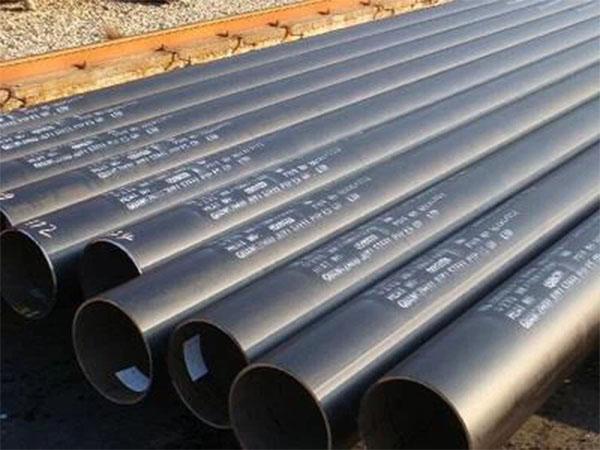Anti-corrosion treatment of seamless carbon steel pipes
Seamless carbon steel pipe is widely used as an important material in fluid transportation, structural support and other fields. Carbon steel pipe is susceptible to corrosion, and its anti-corrosion properties directly affect the service life and safety. The implementation of reasonable anti-corrosion measures can effectively protect the seamless carbon steel pipe in various applications, extend its service life and reduce maintenance costs.
Central Steel has been committed to the research of steel pipe anti-corrosion treatment, with the industry's top coating services. The following Central Steel will detail the anti-corrosion treatment of seamless carbon steel pipes from three aspects of anti-corrosion treatment methods, anti-corrosion materials and precautions.

Antiseptic treatment method
1. Clean the surface
Mechanical derusting
Use a wire brush, grinding wheel or shot blasting machine to remove rust, oxide and other attachments on the surface of the steel pipe to achieve the purpose of cleaning the surface.
Chemical pickling
The steel pipe is pickled by chemical solvents (such as sulfuric acid, hydrochloric acid) to remove surface rust and provide a good base for subsequent adhesion of anti-corrosion coatings.
Sand blasting
The surface dirt is removed by high pressure abrasive injection, the surface roughness of the steel pipe is enhanced, and the adhesion of the coating is improved.
2. Anti-corrosion coating treatment
Epoxy coating
Epoxy resin has excellent anti-corrosion properties and mechanical strength, and is often used for the internal and external wall protection of seamless carbon steel pipes.
Asphalt coating
A traditional anticorrosion method by coating the surface of the steel pipe with asphalt paint to form a dense protective film, suitable for buried or underwater pipelines.
Polyethylene (3PE) anticorrosion
Three-layer structure anticorrosion (fused epoxy powder + bonding layer + polyethylene layer) is an efficient anticorrosion technology, which is widely used in oil and gas pipelines.
3. Hot dip galvanizing
The seamless carbon steel pipe is immersed in molten zinc solution, forming a zinc layer on the surface to provide physical barrier and electrochemical protection, suitable for steel pipes exposed to atmospheric environment.
4. Chemical phosphating
A phosphate film is formed on the surface of seamless carbon steel pipe, which can provide certain corrosion resistance and increase the adhesion of the coating.
5. Lining with anti-corrosion layer
Cement mortar lining
It is used for large diameter pipeline, which can effectively prevent the inner wall corrosion when transporting water or sewage.
Glass fiber reinforced plastic lining
Provides high strength corrosion protection, suitable for chemical pipeline.
Anticorrosive material
1. Inorganic anticorrosive materials
Zinc powder, aluminum powder: used for primer protection, with good cathodic protection effect.
Silicate materials: Special anti-corrosion applications for coatings or linings.
2. Organic anticorrosive materials
Epoxy, polyurethane: resistant to chemical corrosion and mechanical wear, suitable for a variety of environments.
Fluorocarbon coatings: Excellent weather and corrosion resistance, suitable for long-term exposure.
3. Composite materials
Glass fiber reinforced plastic and composite polyethylene layer: combined with a variety of advantages, improve the corrosion resistance and application range.
Matters needing attention
Substrate treatment
Before anti-corrosion treatment, it is necessary to ensure that the surface of the seamless carbon steel pipe is clean, dry, and without oil pollution to avoid the adhesion of the anti-corrosion layer.
Anticorrosive coating application
The coating construction should be carried out in a dry environment to ensure that the construction temperature and humidity meet the technical requirements.
The coating thickness should be uniform to avoid local thin or bubbles affecting the anti-corrosion effect.
Environmental adaptation
According to the application scenario and medium conditions of seamless carbon steel pipe, select the appropriate anti-corrosion treatment scheme, such as polyurethane coating for high salt spray environment, and glass fiber reinforced plastic lining for strong acid and alkali environment.
Inspection and maintenance
After the anti-corrosion treatment is completed, the adhesion, thickness and integrity of the anti-corrosion layer should be tested to ensure compliance with the standard requirements.
Check the integrity of the anti-corrosion layer regularly during long-term use and repair the damaged parts in time.
Conclusion
The anti-corrosion treatment of seamless carbon steel pipe is an important guarantee for its reliable operation. Through reasonable selection of anti-corrosion methods and materials, and pay attention to construction details and later maintenance, the corrosion resistance and service life of seamless carbon steel pipes can be significantly improved, so as to meet the complex needs of different industries.
